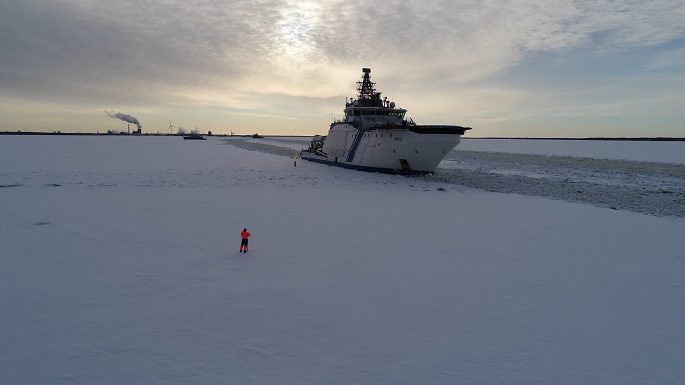Ancient sea ice unveils mystery of modern climate: Aussie study
Published : 23 Jun 2020, 14:42
Sea ice across the Southern Ocean played a crucial role in controlling atmospheric carbon dioxide levels during times of historic climate change, a research revealed on Tuesday, reported Xinhua.
The international team behind the study, led by Australia's University of New South Wales (UNSW), analyzed samples of ancient sea ice to find what caused an extended plateau of global CO2 levels roughly 14,600 years ago.
They found that the seasonal growth and destruction of sea ice in a warming world enhances the amount of marine life present in the sea around Antarctica, with those lifeforms absorbing carbon from the atmosphere, which ultimately becomes stored in the deep ocean.
With the world currently facing the prospect of catastrophic climate change, the team believes their research will help create better models for the global scientific community to tackle the issue.
According to research leader Professor Chris Fogwill, Honorary Professor at UNSW and Professor at Keele University in Britain, the Southern Ocean occupies roughly 14 percent of the earth's surface and plays a fundamental role in the global carbon cycle and climate.
"It has captured around half of all human-related carbon that has entered the ocean to date, and is therefore crucial for regulating carbon dioxide levels resulting from human activity," Fogwill said.
"Understanding the processes that determine its effectiveness as a carbon sink through time are essential to reducing uncertainty in future projections."
By looking at samples from the last ice age around 18,000 years ago, scientists can tell that carbon dioxide in the atmosphere rose rapidly from around 190 parts per million (ppm) to 280 ppm over a period of around 7,000 years.
There is one period in particular which stands out -- a 1,900-year stretch around 14,600 years ago when carbon dioxide levels plateaued at a nearly constant level of 240 ppm.
For years the cause of this plateau was unknown, but scientists knew that it could be crucial for improving climate change projections.
To solve the mystery, Fogwill's team travelled from Australia to the Patriot Hills Blue Ice Area in Antarctica.
There, by analysing markers of organic material on a unique section of the continent's surface, the team discovered a noticeable increase in the number and diversity of marine organisms present across the 1,900 year period when carbon dioxide plateaued.
What they found is the first recorded evidence of increased biological productivity in the Antarctic zone during that period, clearly linking marine life in the Southern Ocean to the carbon dioxide plateau.
The results imply that during periods of Southern Ocean sea ice expansion, high variability in winter and summer sea ice extent leads to increased marine life activity and therefore enhanced carbon capture.
By combining multiple fields of research, the team were able to reach a result that could help understand what we as a planet are encountering now, and the important role which sea ice plays in determining atmospheric CO2 and potentially our future as a species.
"A lot of science can just focus on one specific process such as a physical, biological, or chemical aspect, but this work is a true interdisciplinary collaboration," co-author Dr Zoe Thomas from UNSW said.
"It's only when you look at the combination of all these different roles that you get the main story -- while it can be tempting to just go down one route, we got together a big team with a range of different expertise which allowed us to get a broader understanding of the system."


